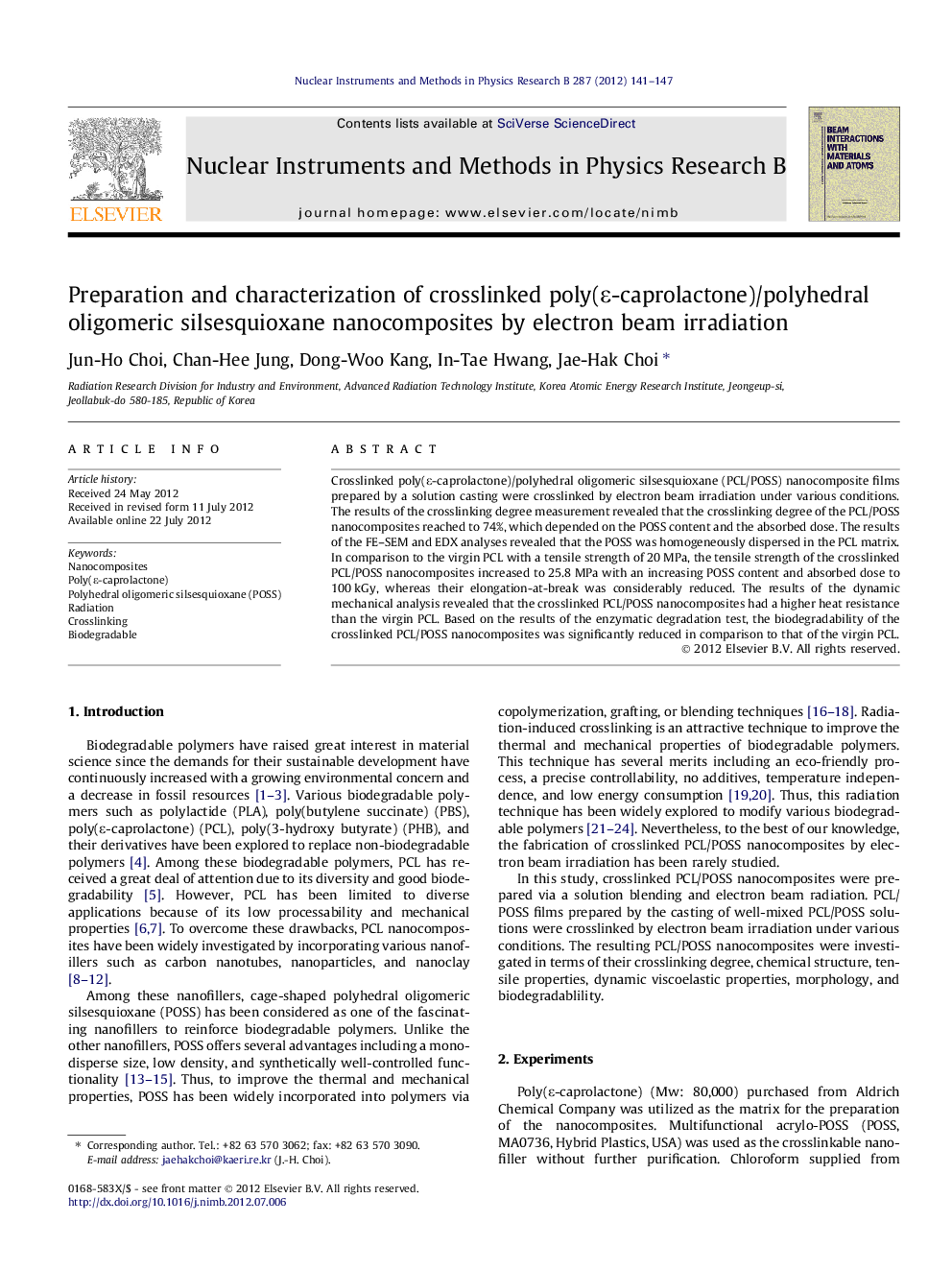| Article ID | Journal | Published Year | Pages | File Type |
|---|---|---|---|---|
| 1682243 | Nuclear Instruments and Methods in Physics Research Section B: Beam Interactions with Materials and Atoms | 2012 | 7 Pages |
Crosslinked poly(ε-caprolactone)/polyhedral oligomeric silsesquioxane (PCL/POSS) nanocomposite films prepared by a solution casting were crosslinked by electron beam irradiation under various conditions. The results of the crosslinking degree measurement revealed that the crosslinking degree of the PCL/POSS nanocomposites reached to 74%, which depended on the POSS content and the absorbed dose. The results of the FE–SEM and EDX analyses revealed that the POSS was homogeneously dispersed in the PCL matrix. In comparison to the virgin PCL with a tensile strength of 20 MPa, the tensile strength of the crosslinked PCL/POSS nanocomposites increased to 25.8 MPa with an increasing POSS content and absorbed dose to 100 kGy, whereas their elongation-at-break was considerably reduced. The results of the dynamic mechanical analysis revealed that the crosslinked PCL/POSS nanocomposites had a higher heat resistance than the virgin PCL. Based on the results of the enzymatic degradation test, the biodegradability of the crosslinked PCL/POSS nanocomposites was significantly reduced in comparison to that of the virgin PCL.
► The homogenously-mixed PCL/POSS nanocomposites were prepared by solution blending. ► The crosslinking of the nanocomposites was conducted by electron beam irradiation. ► The crosslinked nanocomposites showed the improved mechanical and thermal properties. ► This technique is useful to fabricate high-performance polymer nanocomposites.
